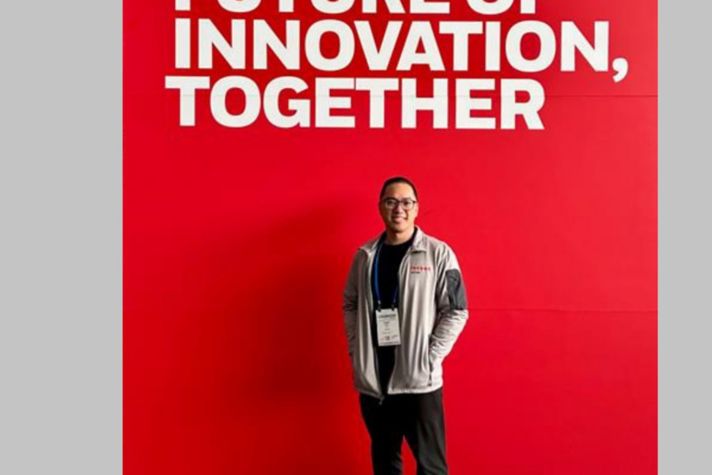-
Global
-
Africa
-
Asia Pacific
-
Europe
-
Latin America
-
Middle East
-
North America
- |
- BUSINESSES
- |
- Contact
- |
-
Global
-
Africa
-
Asia Pacific
-
Europe
-
Latin America
-
Middle East
-
North America
- |
- BUSINESSES
- |
- Contact
- |
You are browsing the product catalog for
You are viewing the overview and resources for
- News
- Blueprint for Breakthroughs: Transforming Light Into Innovation
Blueprint for Breakthroughs: Transforming Light Into Innovation
Learn how this Futureshaper is revamping aerospace technologies with more than 60 patents in integrated photonics, helping to create sensing technologies critical for aircraft, drones and satellites.
From aircraft to satellites, aerospace technology relies on tons of tiny sensors to detect their surroundings. Thanks to Futureshapers like Matthew Puckett, a principal research scientist in Honeywell’s Aerospace Technologies business, these sensors are able to provide critical information about their environment, such as location, speed and direction.
With more than 60 patents to his name, Puckett is at the forefront of modernizing light manipulation on a chip, offering a glimpse into a future for advanced aerospace technologies. His work in integrated photonics focuses on creating sensing technologies that provide critical information about the environment, determining the position, velocity, and rotation of aircraft, drones and satellites.
Puckett's innovations extend to chemical sensing, which has significant implications for industrial applications and environmental monitoring. Integrated photonics-based chemical sensors can be used for real-time monitoring of chemical reactions, ensuring operational efficiency and safety. These sensors can be mounted on drones for standoff detection of gas leaks or explosives.
From curriculum to career, finding inspiration
Puckett's journey began at the University of California, San Diego, where he studied integrated photonics. He then started his role at Honeywell after graduate school in 2016.
“I was lucky to find a position at Honeywell that aligned perfectly with my studies,” Puckett said.
His advice for anyone new to the engineering space is to seek mentorship. He highlighted the importance of mentors, including his own, Glen Sanders, who provided guidance on what it means to be a technologist in an industry environment and offered technical support.
Innovative thinking and problem-solving
Puckett thrives on creative problem-solving – key to finding the right solution and invention. His excitement for collaboration is evident.
“Working with a multidisciplinary team of experts allows us to tackle challenges more effectively,” he said. “I’m constantly learning from atomic physicists and other specialists, which makes my job even more rewarding.”
One of Puckett's favorite projects involves developing a technology known as ultra-low-loss waveguides, which allows high-end sensors used in drones and satellites to be highly receptive to their environments – allowing them to detect their surroundings in a detailed way.
By developing ultra-low loss wave guides, Puckett has significantly improved the efficiency and performance of various applications. These innovations make high-end sensors smaller, cheaper and more manufacturable, enhancing performance, helping to reduce costs and improving energy efficiency of advanced aerospace technologies.
Looking ahead
With an eye on the future, Puckett believes integrated photonics will play a crucial role in addressing the challenges of tomorrow.
“As we see the rise of AI and quantum computing, the need for energy-efficient, high-performance technology will be more critical than ever,” he said.
Photonics technology, particularly ultra-low loss waveguides, significantly enhances the performance of optical devices, helping to make them more efficient and powerful.
These advancements are crucial for developing faster and more powerful microchips, essential for AI and quantum computing applications.
Copyright © 2025 Honeywell International Inc.




